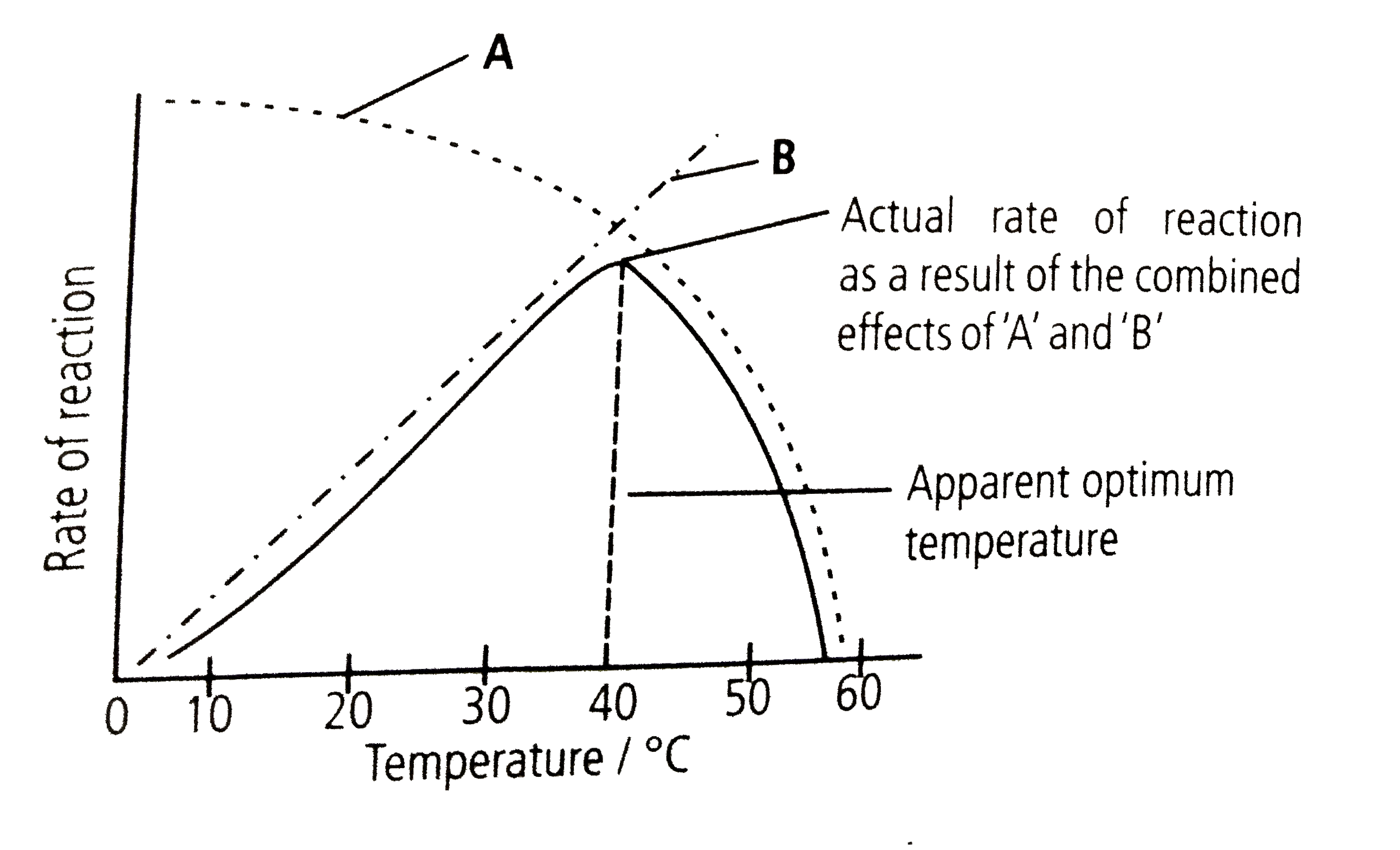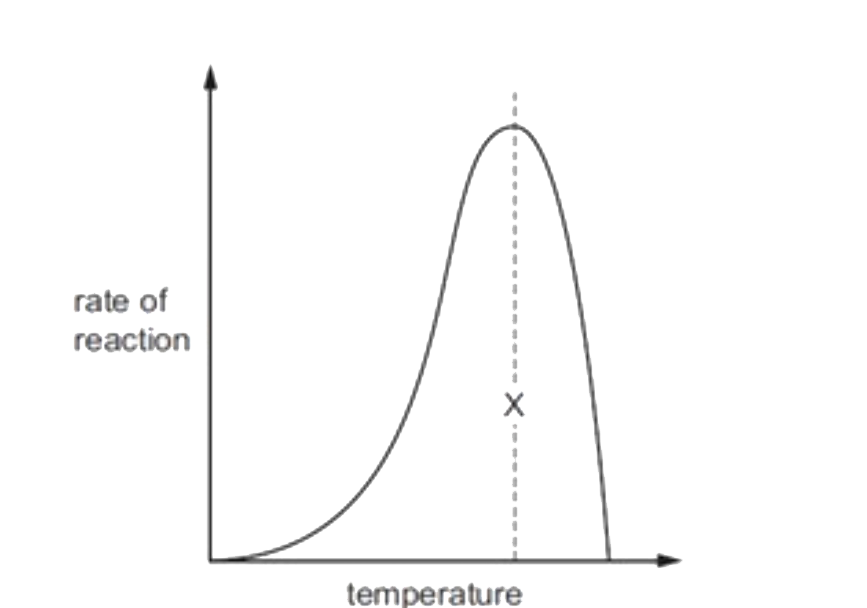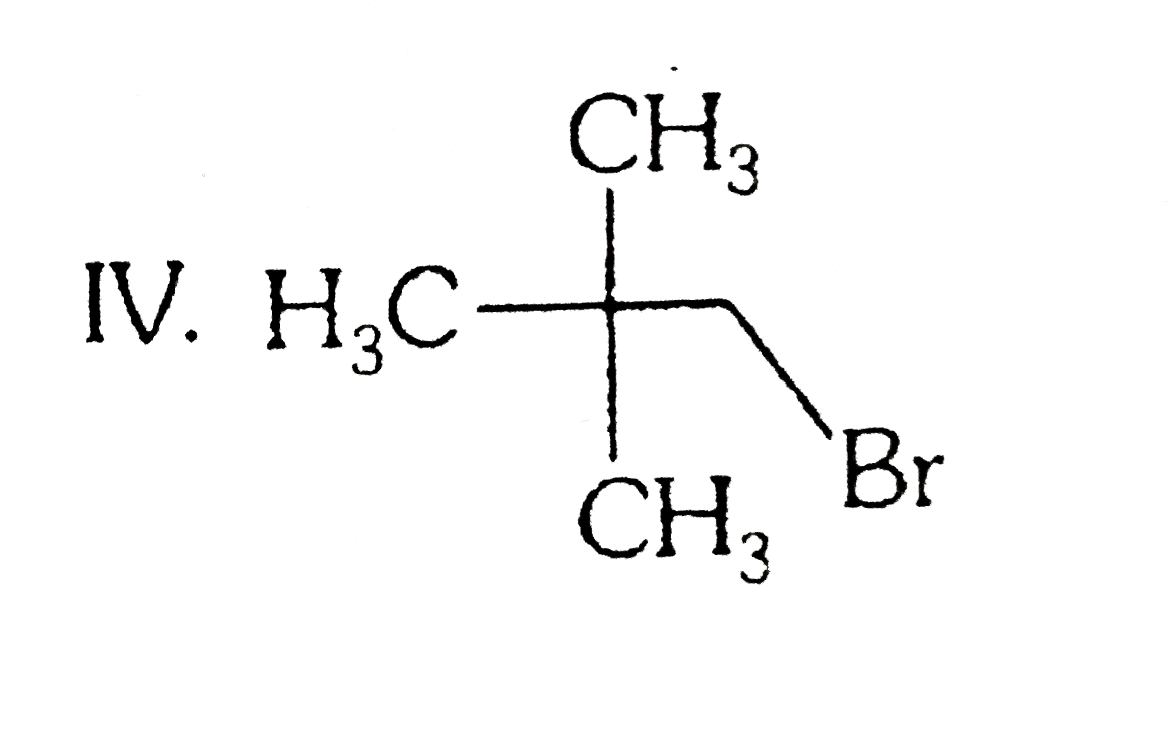(i) Temperature, pH and concentration of substrate can influence enzyme activity ?
(ii) ES complex is short lived and dissociates into products (P)
(iii) In exothermic reaction, the energy level of "P" is lower than "S" substrate
(iv) Cofactors play a crucial role in the catalytic activity of the
enzyme.
Which of the above statements are correct ?
i, iii and iv
ii and iv
i, ii and iv
i, ii, iii and iv
The correct Answer is:D
To determine which statements about enzyme activity are correct, we will analyze each statement one by one.
1. Statement (i): Temperature, pH, and concentration of substrate can influence enzyme activity.
- Analysis: This statement is correct. Enzymes have optimal conditions under which they function best. Changes in temperature and pH can denature enzymes or alter their activity, while substrate concentration affects the rate of reaction until saturation is reached.
2. Statement (ii): ES complex is short-lived and dissociates into products (P).
- Analysis: This statement is also correct. The enzyme-substrate (ES) complex is transient; it forms when the substrate binds to the enzyme and quickly dissociates into products after the reaction occurs.
3. Statement (iii): In exothermic reaction, the energy level of "P" is lower than "S" substrate.
- Analysis: This statement is correct. In an exothermic reaction, the products (P) have lower energy than the substrates (S) because energy is released during the reaction process.
4. Statement (iv): Cofactors play a crucial role in the catalytic activity of the enzyme.
- Analysis: This statement is correct as well. Cofactors, which can be metal ions or organic molecules, assist enzymes in catalyzing reactions by helping to stabilize the enzyme-substrate complex or by participating in the reaction.
Conclusion:
All four statements are correct. Therefore, the answer to the question is that all the statements (i, ii, iii, and iv) are correct.
- Analysis: This statement is correct. Enzymes have optimal conditions under which they function best. Changes in temperature and pH can denature enzymes or alter their activity, while substrate concentration affects the rate of reaction until saturation is reached.
- Analysis: This statement is also correct. The enzyme-substrate (ES) complex is transient; it forms when the substrate binds to the enzyme and quickly dissociates into products after the reaction occurs.
- Analysis: This statement is correct. In an exothermic reaction, the products (P) have lower energy than the substrates (S) because energy is released during the reaction process.
- Analysis: This statement is correct as well. Cofactors, which can be metal ions or organic molecules, assist enzymes in catalyzing reactions by helping to stabilize the enzyme-substrate complex or by participating in the reaction.
All four statements are correct. Therefore, the answer to the question is that all the statements (i, ii, iii, and iv) are correct.
Topper's Solved these Questions
- BIOLOGY AT A GLANCEBOOK - ALLENCHAPTER - BIOLOGY AT A GLANCEEXERCISE - Reproduction In Plants
25 Videos
- BIOLOGY AT A GLANCEBOOK - ALLENCHAPTER - BIOLOGY AT A GLANCEEXERCISE - Genetics
29 Videos
- BIOLOGY AT A GLANCEBOOK - ALLENCHAPTER - BIOLOGY AT A GLANCEEXERCISE - Cell Biology
80 Videos
- BIODIVERSITY AND CONSERVATIONBOOK - ALLENCHAPTER - BIODIVERSITY AND CONSERVATIONEXERCISE - S
18 Videos
- BIOLOGY AT A GLANCE (ZOOLOGY )BOOK - ALLENCHAPTER - BIOLOGY AT A GLANCE (ZOOLOGY )EXERCISE - EXERCISE
207 Videos
Similar Questions
Read the following statements carefully :
( i ) primary succession is a very slow process taking thousands of years for the climax to be reached.
(ii) The energy at a higher trophic level is always more than at a lower level
(iii) Bacterial and fungal enzymes degrade detritus into simple inorganic substances. This process is called fragmentation .
(iv ) All succession, whether taking place in water or on land, proceeds to a similar climax community : the mesic condition . Which of the two above statements are correct ?
View SolutionAmong the statement given below, which statements /s is / are correct regarding the relationship between enzyme and substrate ?
I. Above a certain concentration of substrate , an enzyme reaches its maximum rate of reaction
II. Increasing the substrate concentration to a higher level doesn't reverse the effects of a competitive inhibitor.
III At high substrate concentration , a non competitive inhibitor no longer affects the enzyme activity .
IV. The higher the concentration of substrate the faster an enzyme can cataylse a reaction.
View Solution
Knowledge Check
Arrange the steps of catalytic action of an enzyme in order and select the correct option
I. The enzyme releases the products of the reaction and the enzyme is free to bind to another substrate
II. The active site of enzyme is in close proximity of the substrate and breaks the chemical bonds of the substrate
III. The binding of substrate induces the enzyme to alter its shape fitting more tightly around substrate.
VI. The substrate binds to the active site of the enzymeAIV,III,II,IBIII,III,I,IVCIV,II,I,IIDII,I,IV,IIIRefer to the given graph showing relationship between temperature and enzyme action.
Select the correct statement regarding 'A' and 'B'.
(i) 'A' shows the rate at which reaction decreases due to denaturation of enzyme molecules.
(ii) 'B' shows rate at which reaction increases due to decreased kinetic energy of substrate.
(iii) As temperature rises, more and more enzyme molecules are denatured and 'A' appears to fall.
(iv) 'B' shows rate at which reaction increases due to increased kinetic energy of substrate and enzyme molecules.
 A(i),(iii) and (iv)B(iii) onlyC(iii) and (iv) onlyD(i) and (ii) only
A(i),(iii) and (iv)B(iii) onlyC(iii) and (iv) onlyD(i) and (ii) only
The graph shows the effect of temperature on the rate at which the enzyme in a biological washing powder digests and removes fruit juice stains .

Which statements explain the shape of the graph at temperatures higher than X ?
I. Bonds are broken between the R groups of the amino acids in the polypeptide chains of the enzyme.
II. There are more collisions between the enzyme and its substrate.
III. The tertiary structure of the enzyme is altered.
Iv. The shapes of the active site and the substrate are no longer complementary .
View SolutionHow many of the following statements are correct regarding properties of enzyme ?
(i) It lowers down the activation energy of the reaction .
(ii) An active site of the enzyme is the pocket into which the substate fits .
(iii) The catalytic structure of most of the enzyme is globular and primary .
(iv) Carbonic anhydrase enzyme is considered as the fastest enzyme.
View SolutionIdentify the wrong statements
(a) The substrate binds to active site of enzyme and not fitting into active site
(b) The binding of substrate induces the enzyme to alter its shape
(c ) Chemical bonds of substrate break down not to form now enzyme product complex
(d) The enzyme releases the products of the reaction and run through catalytic cycle once again
View SolutionNucleophilic aliphatic substitution reaction is mainly of two types: SN1 and SN2. The SN1 mechanism is a two step process. Reaction velocity of SN1 reaction depends only on the concentration of the substrate. Since product formation takes place by the formation of carbocation, optically active substrate gives (+) and (-) forms of the product. In most of the cases the product usually consits of 5−20% inverted product and 80−95% racemised species. The more stable the carbocation, the greater is the proportion of racemisation. In solvolysis reaction, the more nucleophilic the solvent, the greater is the proportion of inversion.
Which of the following compounds will give SN1 and SN2 reactions with considerable rate?
I. C6H5−CH2−Br (II) CH2=CH−CH2−Br (III) CH3−CH(Br)CH3 (IV)
Select the correct answer from teh codes given below
View SolutionWhich of the following factor(s) do(es) not affect enzyme activity ?
A. Temperature
B. pH
C. Enzyme concentration
D. Product concentration
E. Substrate concentration
F. Activation energy
View SolutionWhich of the following statements about enzymes are correct ?
(i) Enzymes do not alter the overall change in free energy for a reaction.
(ii) Enzymes are proteins whose three dimensional energy.
(iii) Enzymes speed up reactions by lowering activation energy.
(iv) Enzymes are highly specific for reactions.
(v) The energy input needed to start a chemical reaction is called activation energy.
View Solution
